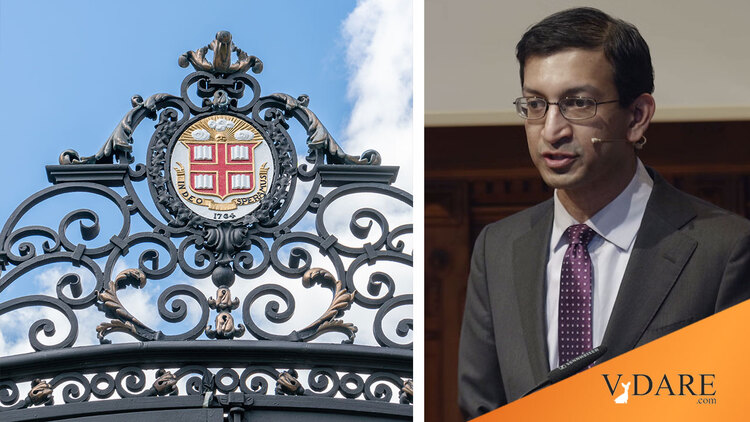
Raj Chetty On The Effects Of Getting Into The Ivy League
By Steve Sailer
07/26/2023
The abstract of Raj Chetty’s new study of the effects of getting into the Ivy League (plus Stanford, MIT, Duke, and Chicago) vs. the non-so-Ivy League (Rice, Northwestern, Notre Dame, etc.) vs. famous state flagships like UCLA and Michigan.
Diversifying Society’s Leaders? The Determinants and Causal Effects of Admission to Highly Selective Private Colleges, Raj Chetty, Harvard University and NBER David J. Deming, Harvard University and NBER John N. Friedman, Brown University and NBER July 2023 Abstract
Leadership positions in the U.S. are disproportionately held by graduates of a few highly selective private colleges. Could such colleges — which currently have many more students from high-income families than low-income families — increase the socioeconomic diversity of America’s leaders by changing their admissions policies? We use anonymized admissions data from several private and public colleges linked to income tax records and SAT and ACT test scores to study this question. Children from families in the top 1% are more than twice as likely to attend an Ivy-Plus college (Ivy League, Stanford, MIT, Duke, and Chicago) as those from middle-class families with comparable SAT/ACT scores. Two-thirds of this gap is due to higher admissions rates for students with comparable test scores from high-income families; the remaining third is due to differences in rates of application and matriculation. In contrast, children from high-income families have no admissions advantage at flagship public colleges. The high-income admissions advantage at private colleges is driven by three factors: (1) preferences for children of alumni, (2) weight placed on non-academic credentials, which tend to be stronger for students applying from private high schools that have affluent student bodies, and (3) recruitment of athletes, who tend to come from higher-income families. Using a new research design that isolates idiosyncratic variation in admissions decisions for waitlisted applicants, we show that attending an Ivy-Plus college instead of the average highly selective public flagship institution increases students’ chances of reaching the top 1% of the earnings distribution by 60%, nearly doubles their chances of attending an elite graduate school, and triples their chances of working at a prestigious firm. Ivy-Plus colleges have much smaller causal effects on average earnings, reconciling our findings with prior work that found smaller causal effects using variation in matriculation decisions conditional on admission. Adjusting for the value-added of the colleges that students attend, the three key factors that give children from high-income families an admissions advantage are uncorrelated or negatively correlated with post-college outcomes, whereas SAT/ACT scores and academic credentials are highly predictive of post-college success. We conclude that highly selective private colleges currently amplify the persistence of privilege across generations, but could diversify the socioeconomic backgrounds of America’s leaders by changing their admissions practices.
So, SAT/ACT scores really do work at predicting who will make the most profitable use of a college education.
The Ivy League doesn’t do its median student much good, but it helps get its top students on very high earning career paths (e.g., Wall Street and consulting) much more than rival but less prestigious colleges.
Chetty didn’t have the courage to consider race and affirmative action’s impact on this data.
In general, the poor and the very rich (99.9th percentile of family income) have chances of getting into the Ivy League better than their test scores would suggest while upper-middle class masses in the 75th to 95% percentiles of income get the fuzzy end of the lollipop.
